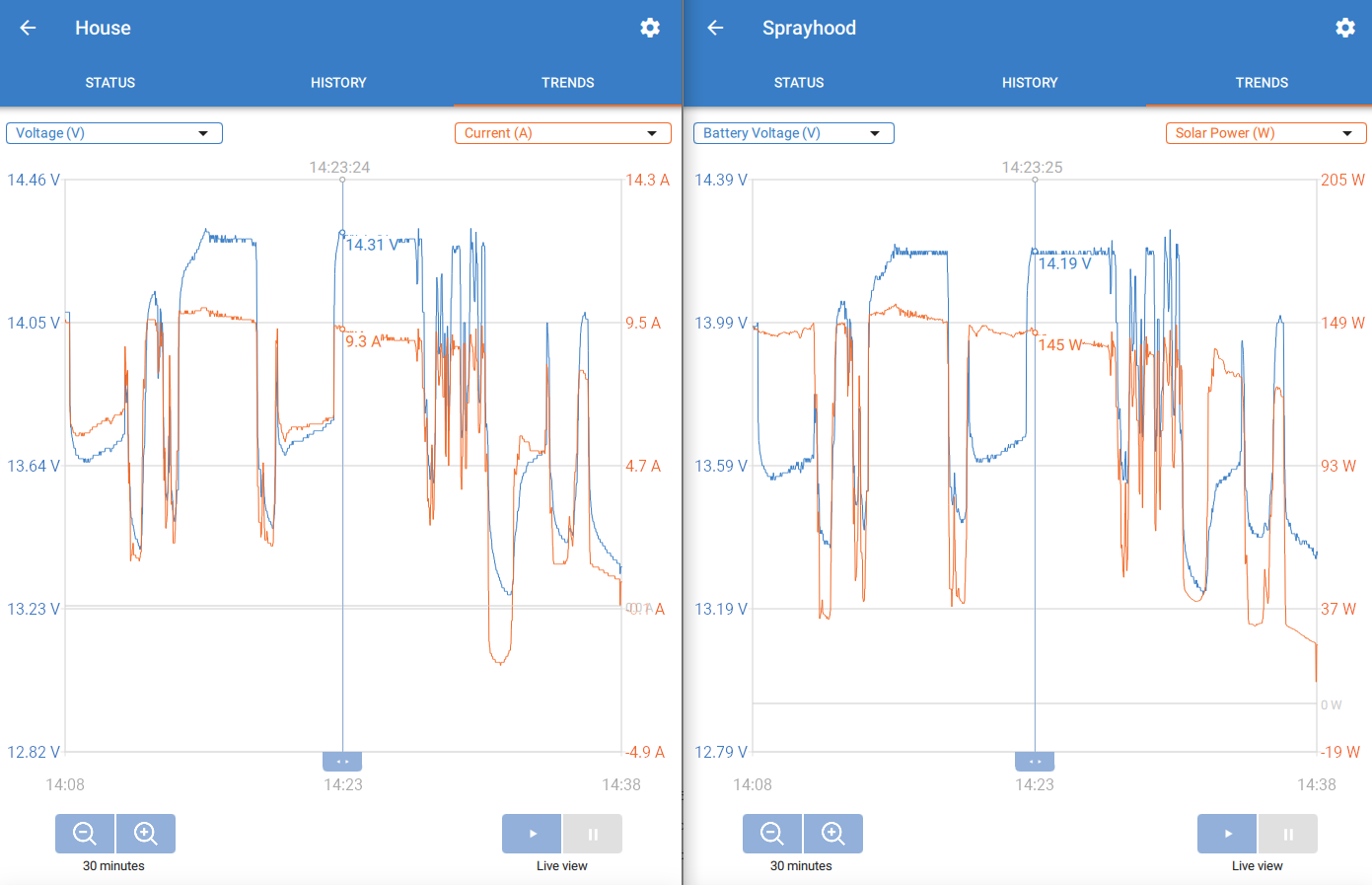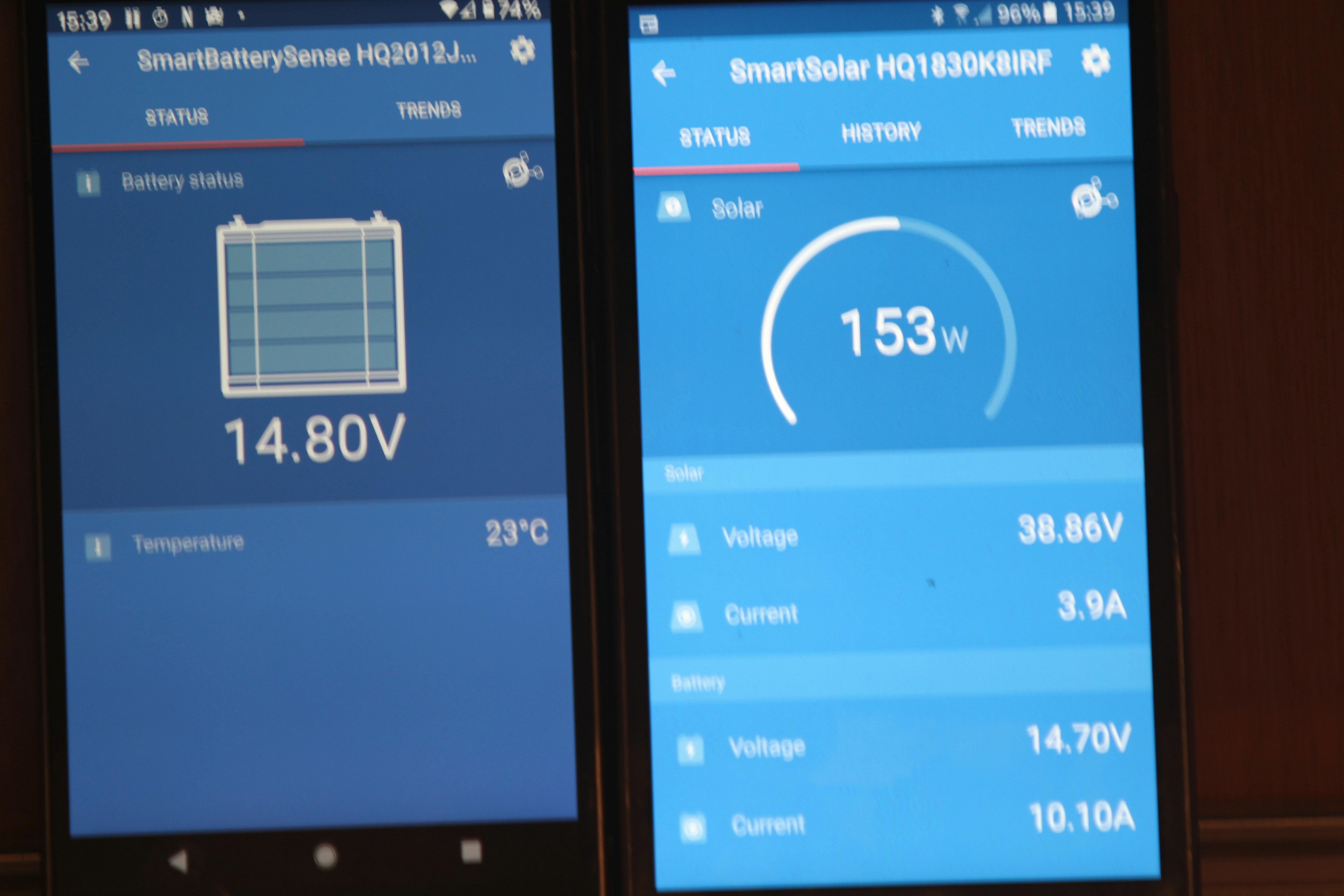Hi all,
I noticed that the MPPT 100/20 (joined with a Smart Battery Sense) reports a lower voltage than the Smart Battery Sense.
It seems to be lower as a function of the current delivered to the battery like this:
V_MPPT100/20 = V_SmartBattery_Sense - 0.current(A)
Example:
Smart Battery Sense reported voltage: 13,50V (and most likely actual V, as verified with two different measuring devices).
MPPT 100/20 reported voltage: 13,40V
Current to battery at this moment: 10A
Could this be some sort of cable loss compensation in the MPPT 100/20 (which probably shouldn't kick in while the Smart Battery Sense is connected and reporting and could hence be a bug?)?
Can it be turned off, so that the MPPT 100/20 reads the exact voltage which is reported by the Smart Battery Sense?
I bought both devices a couple of days ago and they updated their firmware when I first connected them, so I assume they are on the latest FW.


